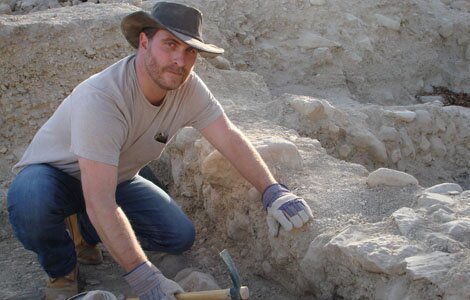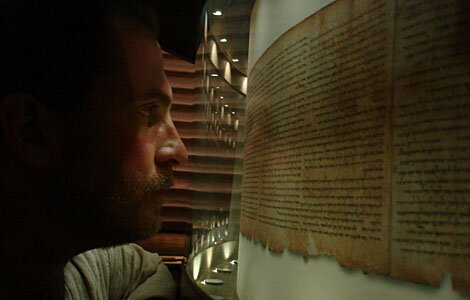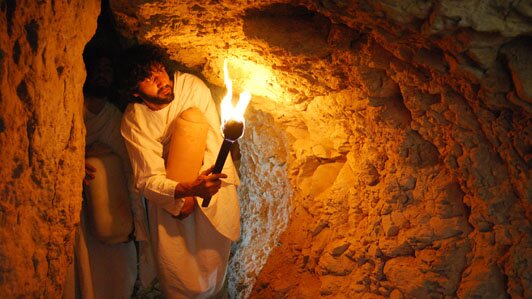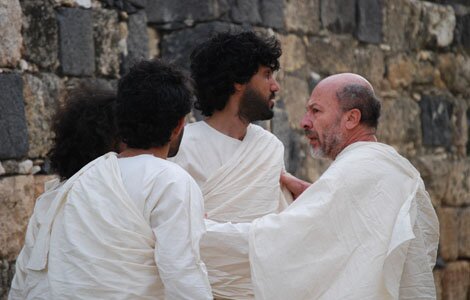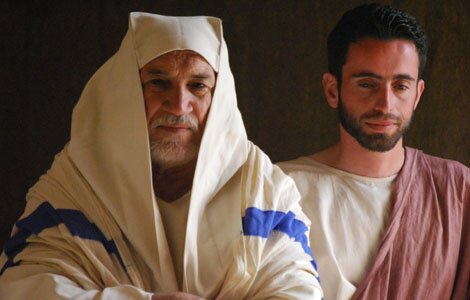National georgraphy – Writings of the Dead Sea Scrolls.
For decades, theories and controversies have swirled around the question of the true origins of the Dead Sea Scrolls — one of the greatest archaeological finds in history. We’ll go beyond enclosed glass displays to examine actual scroll fragments up close and explore the caves where they were found. Then, we’ll examine a new clue to the identity of the scrolls’ writers — a 2,000-year-old cup inscribed with a secret text. Could analysis of this finding unravel the mystery. You can follow the way I do these projects: write my essays after the analysis of previously done projects and interviews.
Vide0 Who wrote Dead Sea Scrolls? National Geography Video
Dr. Bob Cargill excavating. He is an archaeologist from UCLA and is determined to answer once and for all who wrote the Dead Sea Scrolls.
Dr. Bob Cargill in the shrine of the book. He is given unprecedented access to the Scrolls, going beyond the glass to see the real Scrolls close up in the museum vaults and conservation room.
Members of the ascetic Jewish sect, the Essenes, in a cave with the Dead Sea Scrolls. They could have escaped through Jerusalem’s secret tunnels to escape the Romans.
Members of the Essenes in Qumran. As the scrolls were deciphered, Fr. De Vaux excavated Qumran, a site near the scroll caves. Discoveries led him to conclude the scrolls were written there by an ascetic Jewish sect, the Essenes. The idea dominated for 60 years; Qumran became a shrine to the scrolls as the Essenes became international stars. But now the idea that the Essenes wrote the Dead Sea Scrolls is under attack. The inheritor of de Vaux’s archaeological records says he was wrong about Qumran; he mistakenly imagined a monastic community living there.
Members of the Essenes in Qumran. As the scrolls were deciphered, Fr. De Vaux excavated Qumran, a site near the scroll caves. Discoveries led him to conclude the scrolls were written there by an ascetic Jewish sect, the Essenes. The idea dominated for 60 years; Qumran became a shrine to the scrolls as the Essenes became international stars. But now the idea that the Essenes wrote the Dead Sea Scrolls is under attack. The inheritor of de Vaux’s archaeological records says he was wrong about Qumran; he mistakenly imagined a monastic community living there.
Roland de Vaux was a French Dominican priest who led the Catholic team that initially worked on the Dead Sea Scrolls. He was the director of the Ecole Biblique, a French Catholic theological school in East Jerusalem, and he was charged with overseeing research on the scrolls. His team excavated the ancient site of Khirbet Qumran (1951-1956) as well as several caves near Qumran northwest of the Dead Sea.
What is the findings as per National Geography?
Who Wrote the Scrolls? Aired at 28 July 2010.
The Dead Sea Scrolls are some of the founding documents of our civilization. Even though they were discovered over 60 years ago, mystery still surrounds the Scrolls. The Dead Sea Scrolls are widely hailed as the most important archaeological find of modern times, but who wrote them?
- Sixty years ago, the man who led the study of the Scrolls claimed they were written by an obscure Jewish sect, the Essenes, who lived at a place on the Dead Sea called Qumran. But now that theory is being challenged by powerful critics.
- The first of the Scrolls were discovered in a remote mountain cave on the western shores of the Dead Sea in 1947.
- The texts were revealed to be from the Jewish Bible, what Christians later called the Old Testament, and other religious works. These texts were the oldest ever discovered, dating from the third century BCE to the first century of the Common Era.
- Today these Scrolls are housed in Jerusalem’s Israel Museum in a specially built home — the Shrine of the Book. The centerpiece of the Shrine is the Book of Isaiah. It’s 1,000 years older than any other previously known copy.
- The Isaiah Scroll in the Shrine of the Book is a replica. The real treasure, the original Scroll, is kept in a vault.
- The Dead Sea Scrolls contain many biblical texts, but there are also texts, psalms, and prophecies that didn’t survive to be part of the Bible we know. Their discovery transformed our knowledge of Judaism around the time of Jesus.
- Scrolls, the physical manifestation of God’s word, unchanged for thousands of years, have a special place in the Jewish faith.
- Scrolls of the Torah, the first five books of the Jewish Bible, are still written just as they were 2,000 years ago. Today’s scribes use the same animal hide parchment and write exactly the same words as scribes thousands of years ago.
- Two thousand years ago Judaism existed in different forms with important religious divisions between different groups of Jews.
- Forensic science has cut through the debate to reveal that at least a third of the Dead Sea Scrolls were written at Qumran.
- The Scrolls were found in 11 different caves — some right next to the Qumran site, others up to two miles away.
Read more: http://channel.nationalgeographic.com/episode/writing-the-dead-sea-scrolls-5179#tab-facts#ixzz0v70RXwUb
